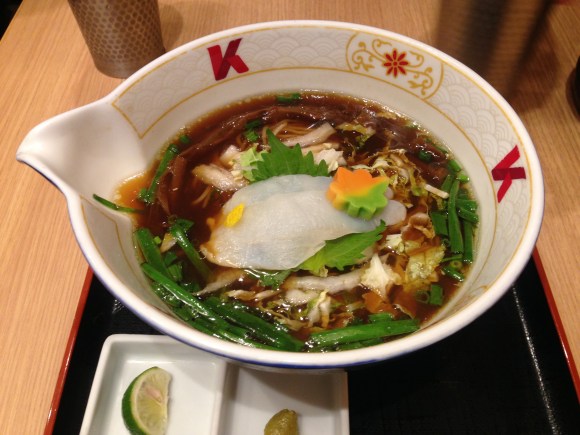
Fugu, one of Japan’s most gourmet foods, is the ramen star of the classy Ginza neighborhood.
Like most forms of pasta, ramen noodles themselves don’t have much flavor, and so the deciding factor when picking a ramen restaurant is the broth. The three most popular broth varieties in Japan are tangy miso (most common in the north), mild soy sauce (a favorite of east and central Japan) and tonkotsu, a savory pork stock (prevalent in the western part of the country).
But if none of those tempts you, in Tokyo there’s a restaurant that makes its ramen broth from fugu, also known as Japanese blowfish…also known as the poisonous seafood that will kill you if it’s not prepared properly.
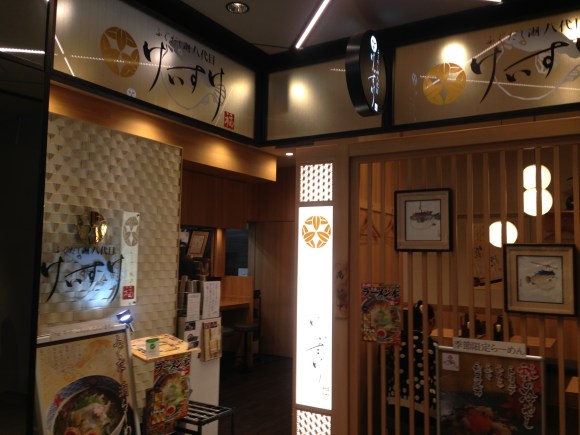
▼ Cute, deadly, and delicious, the fugu really is the complete package.
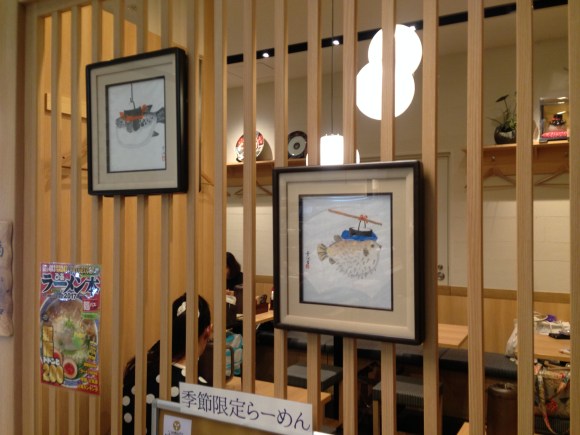
Tokyo’s Ginza is best known as a neighborhood of fancy boutiques and exclusive cocktail lounges. But it’s also where you’ll find the confederation of ramen restaurants called Keisuke. Each branch has its own unique take on the noodle dish, and at Hachidaime Keisuke, located in the newly built Tokyu Plaza Ginza building (where you’ll also find the gorgeous “Japanese garden” green tea dessert), the specialty is ramen that not only has fugu in its broth, but a slice of the coveted delicacy placed atop the noodles.
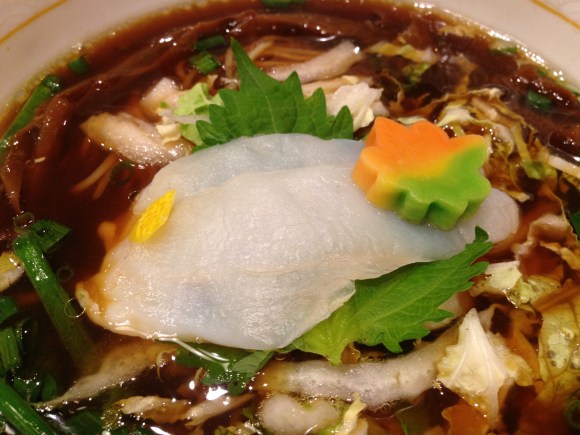
As with many ramen restaurants, you purchase a meal ticket from a vending machine before you sit down. If you’ve never done this before, there’s no need to worry. Keisuke has English menus with numbers that correspond to the button to be pressed for each item.
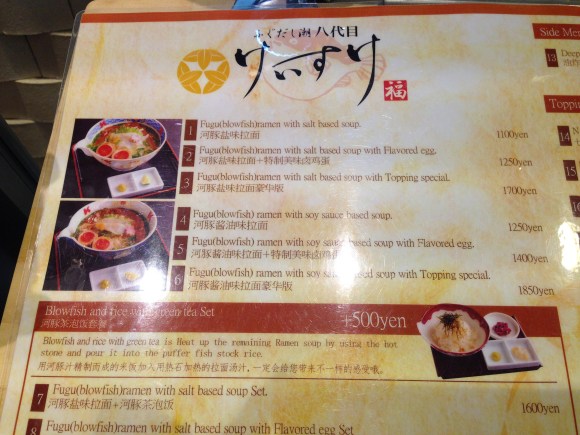
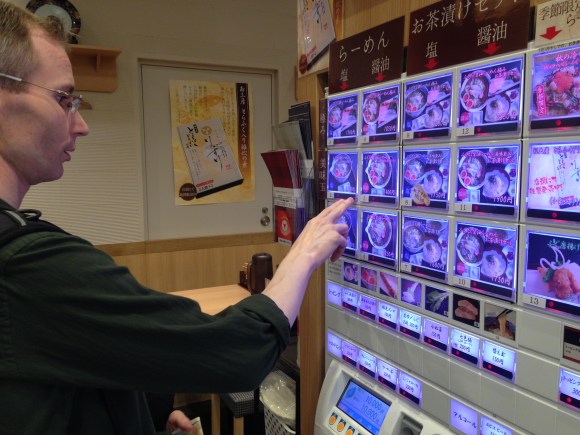
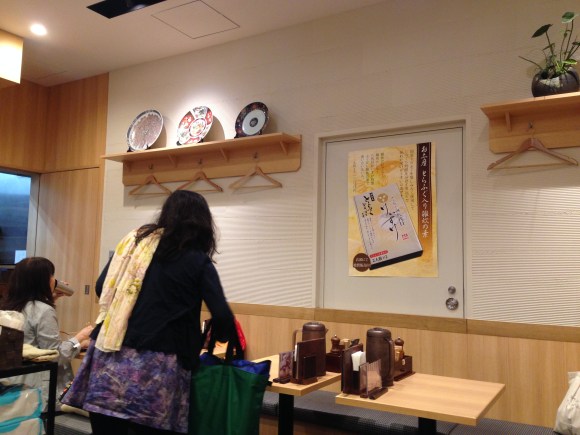
The basic ramen in salty fugu stock broth costs 1,100 yen (US$10), which is a little on the expensive side for ramen. Considering that the restaurant is in the high-rent district, and also that fugu is a classy delicacy, though, it’s a reasonable price. Ramen with a mixed fugu stock/soy sauce broth, meanwhile, starts at 1,250 yen.
▼ Salty
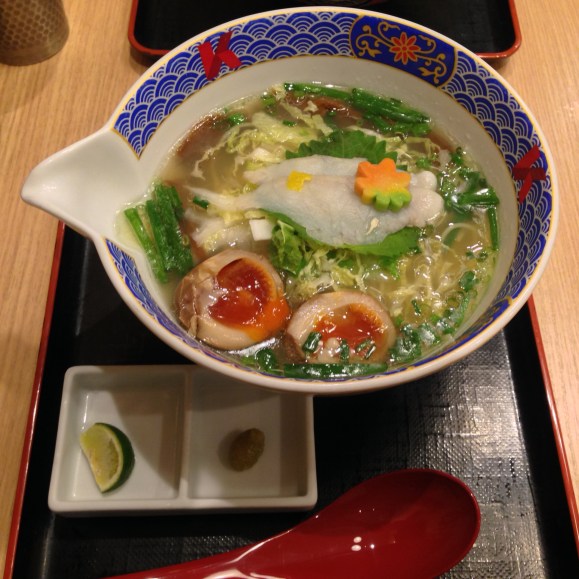
▼ Soy
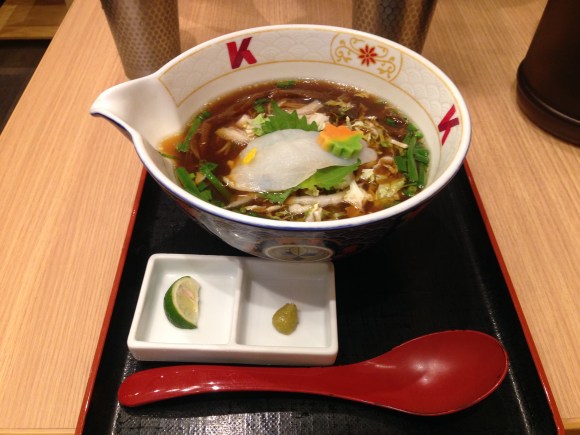
Before digging in, take a moment to appreciate the thought that’s gone into the tableware. Not only is the inside of the bowl decorated with stylized K’s (for “Keisuke”), the outside is adorned with fugu illustrations.
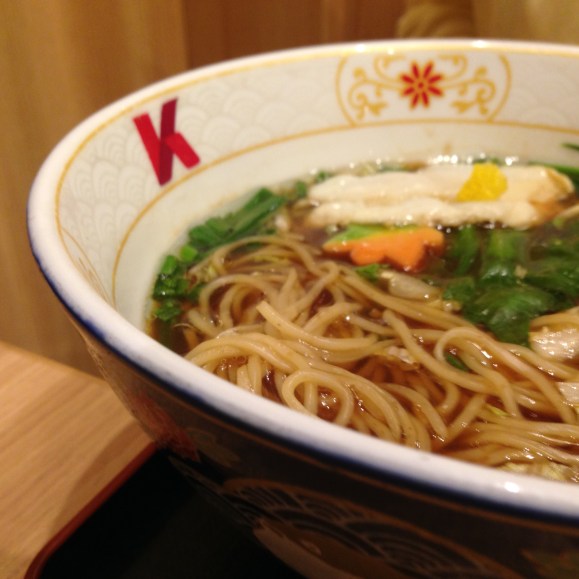
▼ Pausing for a bit of art appreciation will also give you some time to work up the courage to eat the fugu.
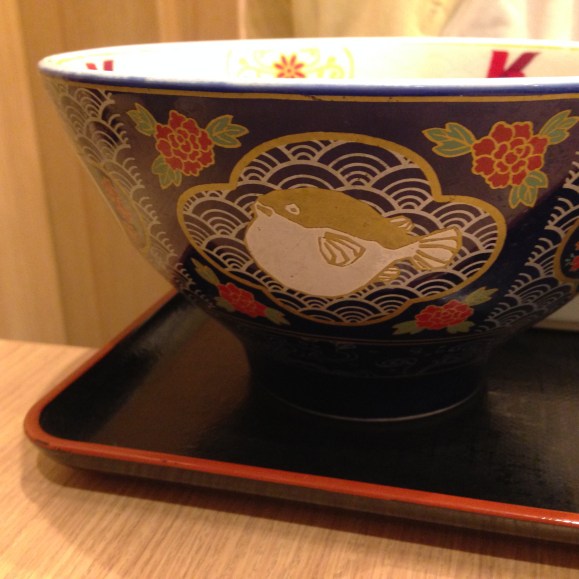
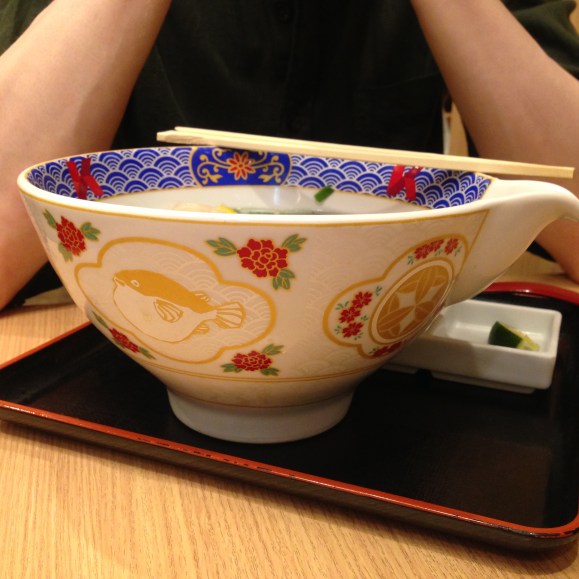
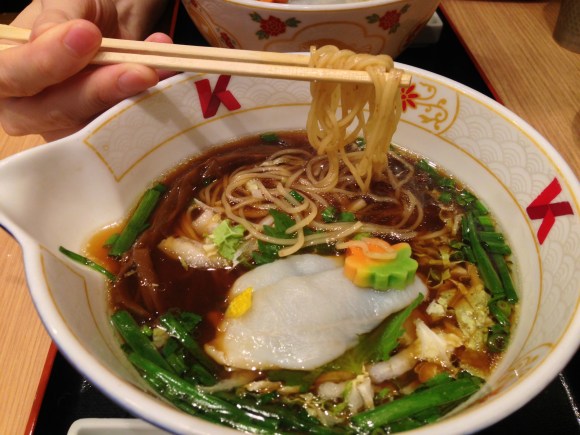
Starting with the salt broth, there’s an immediate seafood kick, with the rich flavors of the fugu providing plenty of flavor but with little, if any, of the unpleasant aftertaste that sometime comes with gyokai (fish stock) ramen. The soy broth has slightly less fish flavor, thanks to the sweetness of the soy. In both varieties, Keisuke also makes the smart decision to let the marque ingredient do most of the work by not loading up its ramen with tons of pungent green onion or other heavy flavors.
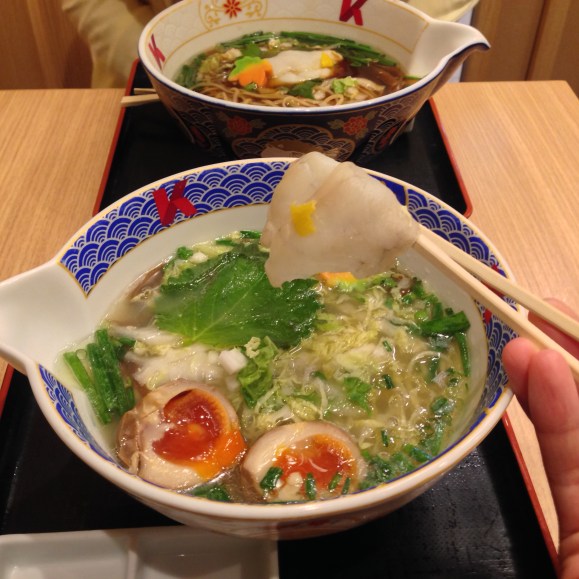
Speaking of the star of the show, sitting right in the center of the bowl is a slice of fugu. You can eat it right away, or let it sit for a while to let it contribute even more of its flavor to the broth.
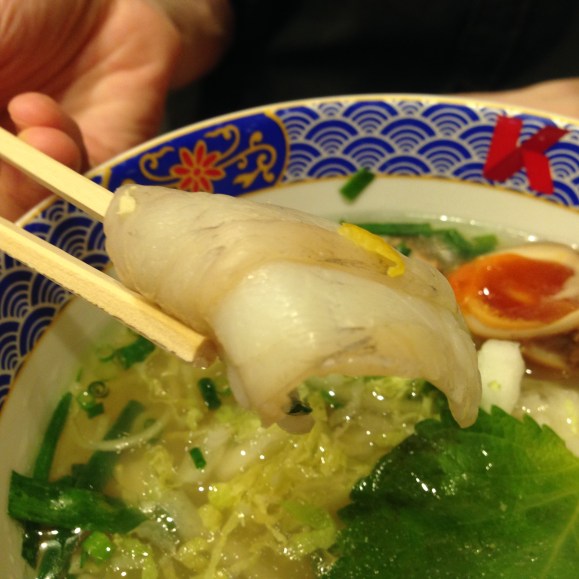
When you do take a bite, you’ll find that fugu has a pleasantly firm, meaty texture. The slice of blowfish is accompanied by a zest of yuzu, a lemony citrus fruit, that adds just a touch of tart complexity.
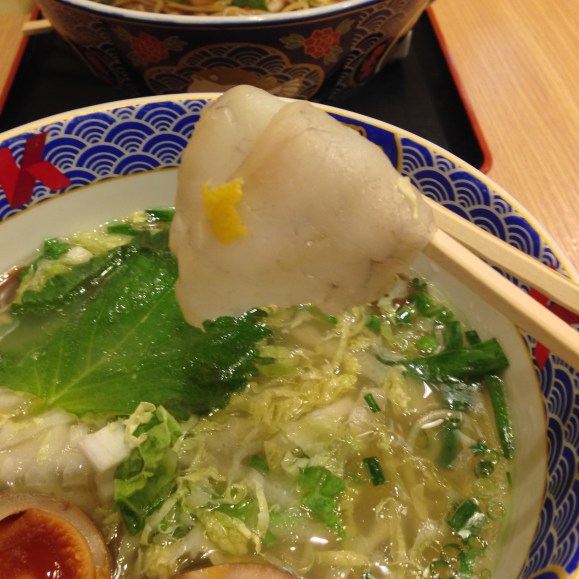
Also sharing space with the fugu in the bowl are hakusai (Chinese cabbage) and a leaf of shiso, a herb that’s often referred to as “Japanese basil.” The shiso’s crisp, clean taste makes it a delicious way to cleanse your palate mid-bowl, letting the flavors wash over your taste buds anew in the meal’s second half.
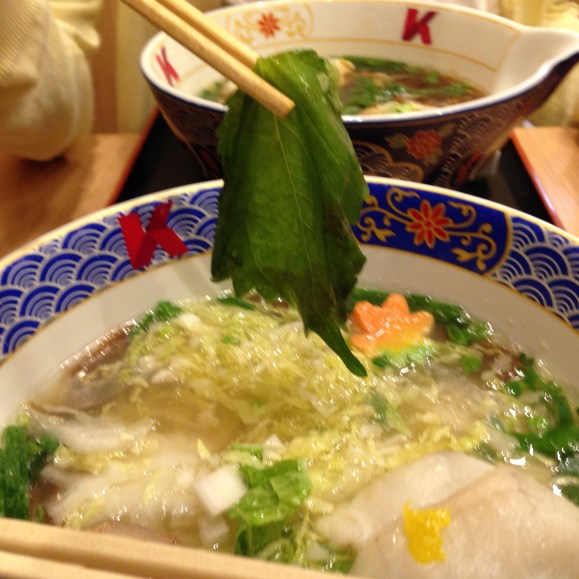
Each order of ramen also comes with an extra-long stalk of menma (fermented bamboo shoots). While menma are a common ramen ingredient, we’ve never seen them cut in such gigantic strips before.
▼ An added bonus to the visual impact is that if you don’t care for menma, you’ve only got one piece to pick out.
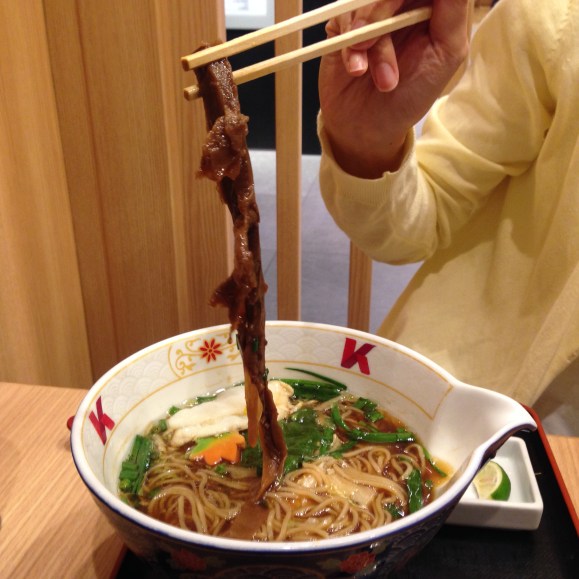
By this point you’ve probably noticed that Keisuke’s bowls aren’t perfectly round. Instead, there’s an extension at one spot, which serves two purposes. First, it makes the bowl, when viewed from directly above, look sort of like an in-profile fugu.
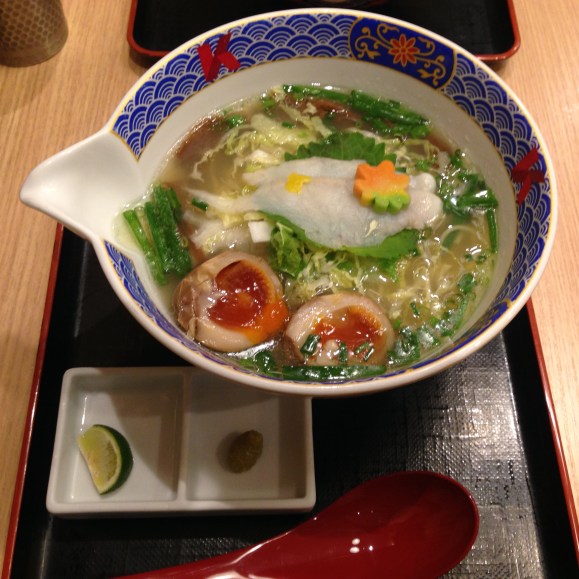
But the extension also serves as a pouring spout. For an additional charge, you can get an order of white rice to pour your left-over broth onto once you’ve finished all your noodles. This is Keisuke’s take on ochazuke (rice with green tea), and the ramen even come with wasabi, a common ochazuke seasoning, and a wedge of citrus fruit, the latter a true ramen rarity.
Should Keisuke’s ramen give you a taste for fugu, you’ll be happy to know that deep-fried blowfish is also on the menu. And if that has you wanting still more fugu, being in Ginza means you’re only a few subway stops from the Yamaguchi Prefecture specialty store, which sells canned fugu that you can take home to munch on at your leisure.
Restaurant information
Hachidaime Keisuke / 八代目けいすけ
Address: Tokyo-to, Chuo-ku, Ginza 5-2-1, Tokyu Plaza basement level 2
東京都中央区銀座5-2-1 東急プラザ地下2F
Open 11 a.m.-11 p.m.
Website
Photos ©SoraNews24
Follow Casey on Twitter for more of his professional eating.

 You can now get fugu, Japan’s poisonous blowfish, for under a buck at revolving sushi restaurants
You can now get fugu, Japan’s poisonous blowfish, for under a buck at revolving sushi restaurants Poisonous blowfish instant ramen on the way from Cup Noodle’s Nissin
Poisonous blowfish instant ramen on the way from Cup Noodle’s Nissin You can now get shaved ice ramen in Japan, and it’s painfully delicious【Taste test】
You can now get shaved ice ramen in Japan, and it’s painfully delicious【Taste test】 2,500 yen for Tokyo ramen? High-end noodles in the high-rent Ginza district are totally worth it
2,500 yen for Tokyo ramen? High-end noodles in the high-rent Ginza district are totally worth it 10-year-old Japanese girl is youngest person ever certified to prepare deadly poisonous blowfish
10-year-old Japanese girl is youngest person ever certified to prepare deadly poisonous blowfish Japan’s deadliest food claims more victims, but why do people keep eating it for New Year’s?
Japan’s deadliest food claims more victims, but why do people keep eating it for New Year’s? The etiquette rules for visiting Shinto shrines in Japan
The etiquette rules for visiting Shinto shrines in Japan Kiki’s Deliver Service heroine gets new design from Spy x Family artist for 40th anniversary
Kiki’s Deliver Service heroine gets new design from Spy x Family artist for 40th anniversary Starbucks unveils new Valentine’s Day Frappuccino in Japan
Starbucks unveils new Valentine’s Day Frappuccino in Japan Starbucks Japan’s Lucky Bag #3: A fukubukuro surprise we weren’t expecting
Starbucks Japan’s Lucky Bag #3: A fukubukuro surprise we weren’t expecting Village Vanguard possibly tops its own record for most useless junk in a lucky bag this year
Village Vanguard possibly tops its own record for most useless junk in a lucky bag this year The top 10 annoying foreign tourist behaviors on trains, as chosen by Japanese people【Survey】
The top 10 annoying foreign tourist behaviors on trains, as chosen by Japanese people【Survey】 Bad tourist manners at Mt Fuji Lawson photo spot prompts Japanese town to block view with screens
Bad tourist manners at Mt Fuji Lawson photo spot prompts Japanese town to block view with screens Doraemon found buried at sea as scene from 1993 anime becomes real life【Photos】
Doraemon found buried at sea as scene from 1993 anime becomes real life【Photos】 World’s first real ramen in a can now available at Japanese vending machines
World’s first real ramen in a can now available at Japanese vending machines Hayao Miyazaki says Happy New Year to Studio Ghibli fans with new art for Year of the Snake
Hayao Miyazaki says Happy New Year to Studio Ghibli fans with new art for Year of the Snake McDonald’s Japan has a fukubukuro lucky bag that everyone wants to get their hands on
McDonald’s Japan has a fukubukuro lucky bag that everyone wants to get their hands on What’s in Starbucks Japan’s fukubukuro lucky bag for 2025?
What’s in Starbucks Japan’s fukubukuro lucky bag for 2025? Let’s go open a Lego Japan lucky bag…o
Let’s go open a Lego Japan lucky bag…o There’s an official PlayStation lucky bag, but what’s inside?【Photos】
There’s an official PlayStation lucky bag, but what’s inside?【Photos】 Square Enix releases a Final Fantasy fukubukuro lucky bag for New Year’s in Japan
Square Enix releases a Final Fantasy fukubukuro lucky bag for New Year’s in Japan Animate Akihabara releases a lucky bag for the first time in years, and it’s amazing
Animate Akihabara releases a lucky bag for the first time in years, and it’s amazing Bear breaks into house in Japan, quickly begins spending winter exactly like Japanese people do
Bear breaks into house in Japan, quickly begins spending winter exactly like Japanese people do Japanese company develops classy heavy metal band frames for glasses
Japanese company develops classy heavy metal band frames for glasses This downtown Tokyo cafe is like a time machine that takes you back 50 years into the past
This downtown Tokyo cafe is like a time machine that takes you back 50 years into the past Station of despair: What to do if you get stuck at the end of Tokyo’s Chuo Rapid Line
Station of despair: What to do if you get stuck at the end of Tokyo’s Chuo Rapid Line Starbucks Japan reveals new winter holiday goods to wrap up 2024
Starbucks Japan reveals new winter holiday goods to wrap up 2024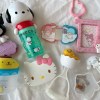 McDonald’s new Happy Meals offer up cute and practical Sanrio lifestyle goods
McDonald’s new Happy Meals offer up cute and practical Sanrio lifestyle goods Foreign tourists on Shinkansen bullet train break suitcase etiquette, angering local passengers
Foreign tourists on Shinkansen bullet train break suitcase etiquette, angering local passengers Possessing Harry Potter’s Sword of Godric Gryffindor is now illegal in Japan
Possessing Harry Potter’s Sword of Godric Gryffindor is now illegal in Japan [Deleted] Article written for April Fool’s Day 2018
[Deleted] Article written for April Fool’s Day 2018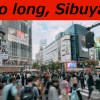 Japanese government to make first change to romanization spelling rules since the 1950s
Japanese government to make first change to romanization spelling rules since the 1950s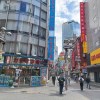 Foreigner’s request for help in Tokyo makes us sad for the state of society
Foreigner’s request for help in Tokyo makes us sad for the state of society Japanese convenience store Family Mart announces abolishment of eat-in spaces
Japanese convenience store Family Mart announces abolishment of eat-in spaces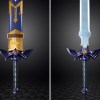 Life-size vibrating Legend of Zelda Master Sword for sale from Nintendo【Photos】
Life-size vibrating Legend of Zelda Master Sword for sale from Nintendo【Photos】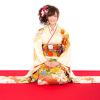 Princesses, fruits, and blacksmiths: Study reveals the 30 most unusual family names in Japan
Princesses, fruits, and blacksmiths: Study reveals the 30 most unusual family names in Japan Studio Ghibli releases free-download board game — Here’s how to play it without reading Japanese
Studio Ghibli releases free-download board game — Here’s how to play it without reading Japanese Nagoya man hospitalized after eating fish with name including “fugu,” a.k.a. “poisonous blowfish”
Nagoya man hospitalized after eating fish with name including “fugu,” a.k.a. “poisonous blowfish” The secret blowfish auction — trading for deadly but tasty fugu 【Video】
The secret blowfish auction — trading for deadly but tasty fugu 【Video】 What happens if you feed pufferfish poison to pufferfish? Japanese scientists trying to find out
What happens if you feed pufferfish poison to pufferfish? Japanese scientists trying to find out Michelin-listed ramen restaurant will turn you into a tiger with a single bite
Michelin-listed ramen restaurant will turn you into a tiger with a single bite Tokyo’s biggest ramen secret? This restaurant just might be the next Michelin star winner
Tokyo’s biggest ramen secret? This restaurant just might be the next Michelin star winner Aichi supermarket caught selling poisonous puffer fish livers, “been selling it for decades”
Aichi supermarket caught selling poisonous puffer fish livers, “been selling it for decades” Clear tonkotsu ramen becomes a cult hit at “Ramen Runway” in Japan
Clear tonkotsu ramen becomes a cult hit at “Ramen Runway” in Japan We Put A Bowl of Tonkotsu Ramen into a Rice Ball: Japan’s new demonic combini temptation
We Put A Bowl of Tonkotsu Ramen into a Rice Ball: Japan’s new demonic combini temptation Tokyo ramen restaurant’s brilliant idea: takeout cups of just ramen broth!【Photos】
Tokyo ramen restaurant’s brilliant idea: takeout cups of just ramen broth!【Photos】 Osaka loses a beloved icon as giant pufferfish disappears in the middle of the night 【Video】
Osaka loses a beloved icon as giant pufferfish disappears in the middle of the night 【Video】 Japanese restaurant says its wonder ramen provides all the vegetables your body needs in one bowl
Japanese restaurant says its wonder ramen provides all the vegetables your body needs in one bowl Tokyo’s new frozen ramen vending machines are brain-breakingly amazing【Taste test】
Tokyo’s new frozen ramen vending machines are brain-breakingly amazing【Taste test】 Japan now has ramen sandwiches
Japan now has ramen sandwiches Why throw away your leftover ramen broth when you can use it to make awesome ramen rice instead?
Why throw away your leftover ramen broth when you can use it to make awesome ramen rice instead? This London ramen restaurant’s super-strange ramen shocks our Japanese taste-tester
This London ramen restaurant’s super-strange ramen shocks our Japanese taste-tester Have you tried Tokushima ramen? No? You should (says our obsessed Japanese-language reporter)
Have you tried Tokushima ramen? No? You should (says our obsessed Japanese-language reporter)
Leave a Reply